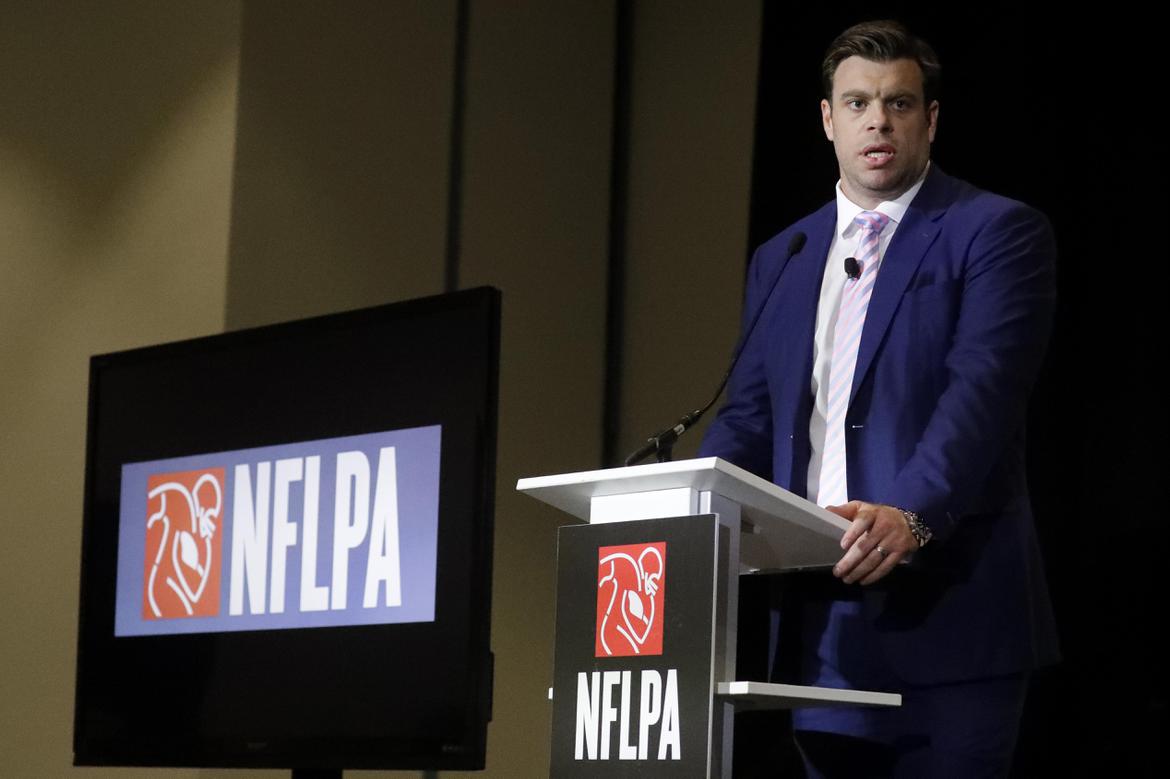Jeff Bagwell was voted into the Baseball Hall of Fame on Wednesday, receiving 86.2 percent of the vote from the BBWAA in his seventh year on the ballot.
Bagwell’s election was thoroughly well-deserved. The longtime Astros first baseman hit 449 home runs and stole 202 bases while playing Gold-Glove defense. He hit for average and power, drew walks, ran the bases well and excelled in the field. Altogether, his 79.6 WAR (according to Baseball-Reference) ranks 64th all-time and fourth among modern-era first basemen.
And he was once traded for Larry Andersen.
It was August 31, 1990, and the Boston Red Sox were in first place in the AL East, looking to cement their position in the division and prepare themselves for the playoffs, where they would likely face the defending World Series champion Oakland A’s. Oakland had just acquired Harold Baines and Willie McGee, putting pressure on the Red Sox to respond.
The Sox had their eye on Larry Andersen, a 37-year-old Astros reliever with a 1.95 ERA and 68 strikeouts in 73 2/3 innings, but Houston had high demands. After some back and forth, Boston offered up Bagwell, a 22-year-old third baseman who was tearing up the Double-A Eastern League.
The Astros bit on the Red Sox’ offer, and Bagwell headed to Houston.
“Three weeks ago, the Houston Astros were evidently holding out for Babe Ruth for the 37-year-old reliever,” Nick Cafardo wrote in the Boston Globe. “So the Red Sox gave them Lou Gehrig. Well, not quite, but third baseman Jeff Bagwell, a University of Hartford product, was considered one of Boston’s best prospects. Bagwell, who played all season in Double A New Britain, hit .333 with 4 home runs and 61 RBIs.”
Cafardo couldn’t have known just how prescient he was. Obviously Bagwell was never Lou Gehrig, but as a graceful, multi-tool first baseman with a big bat, he wasn’t too far off. Not that most people knew that at the time.
“This is not the kind of player you like to lose,” the Springfield Union-News wrote, “but as general manager Lou Gorman said, it was the right thing to do.”
“I admire Jeff Bagwell, and I hope he goes on to have an outstanding career. But right now, my job is to help the Boston Red Sox win a championship. You have to give up something to get what you need,” Gorman said.
On the other hand, he gave up only what he wanted to give up. “They went round and round, talking about Mo Vaughn and Kevin Morton and Phil Plantier. We’re not about to trade them,” Gorman said. Vaughn and Plantier are promising power hitters who starred at Triple A Pawtucket. Morton is a highly-regarded left-handed starter who pitched for Double A New Britain.
Of those players the Red Sox refused to trade, Mo Vaughn went on to win an AL MVP (a year after Bagwell won his MVP in the NL) before fading fast, Plantier lasted eight forgettable seasons with five teams and Morton flamed out after a single year with the Red Sox. The three players totaled 29.7 career WAR (almost all of it from Vaughn), or less than a third of what Bagwell was worth for Houston.
The big reason the Red Sox were willing to part with Bagwell was a supposed logjam at third base, which was where Bagwell played at the time. The Worcester Telegram & Gazette cited Wade Boggs, Tim Naehring, Scott Cooper and Randy Kutcher as notable third basemen in the Sox’ organization. Boggs was a future Hall-of-Famer nearing the end of his time in Boston, while the other three were middling young players who wound up with 92 career home runs among them. (Plus, Bagwell wasn’t destined to last at third base anyway, shifting across the diamond the moment he reached Houston.)
Everyone who offered an opinion on the Bagwell-for-Andersen trade acknowledged that dealing Bagwell was dangerous, but most seemed to view the risk as worthwhile, as the franchise pursued its first World Series title in 72 years. Here’s what the Providence Journal wrote at the time:
Gorman’s move says the Sox are trying to win it all, and you have to like the sentiment, if not the trade itself. Certainly the trading of a top prospect for an aging middle reliever is subject to question. And there’s little middle ground here. If the Sox get eliminated by the A’s in the playoffs, then Gorman lost this gamble. But in a year where no National League team is invincible, and the A’s seem a little more vulnerable now than they did four months ago, it’s worth the risk. Let the devil take tomorrow. The future is now.
As it turned out, the future was not now. Andersen did pitch well for the Sox in September—1.23 ERA in 22 innings—but allowed two runs in three innings in the ALCS as Boston lost to Oakland in a four-game sweep. Andersen then signed with San Diego in the offseason. The next year, Bagwell debuted with the Astros, hit .294/.387/.437 and earned NL Rookie of the Year honors. Andersen’s final season in the Majors was 1994, the same year that Bagwell won NL MVP.
Of course, the Red Sox got a happy ending in 2004, when they finally ended the World Series drought that had inspired them to go for broke and trade Bagwell 14 years earlier. By that point, Andersen was 51 years old and a decade out of baseball. Bagwell was still around, hitting 27 home runs for the Astros in the last full year of a Hall of Fame career.




